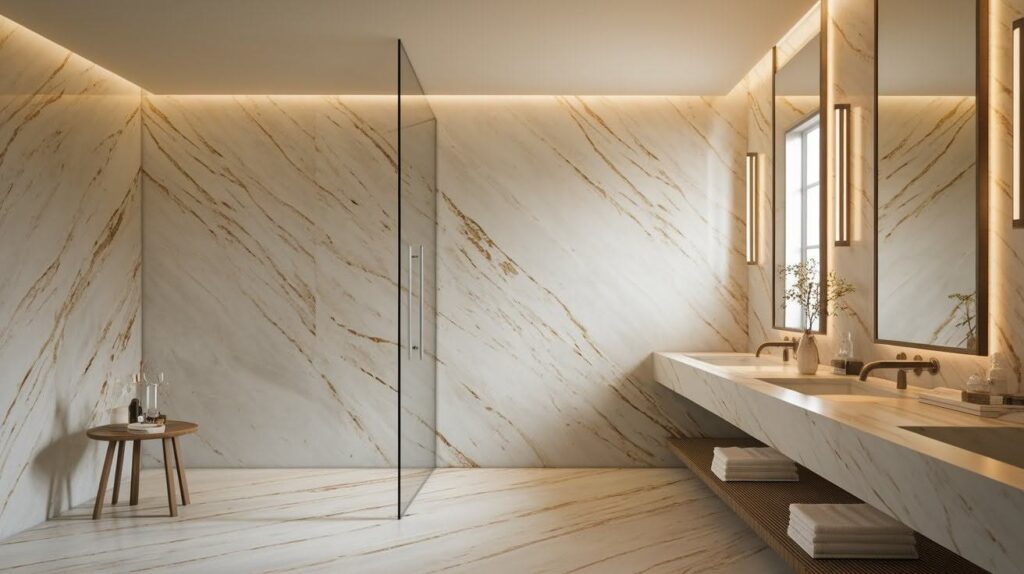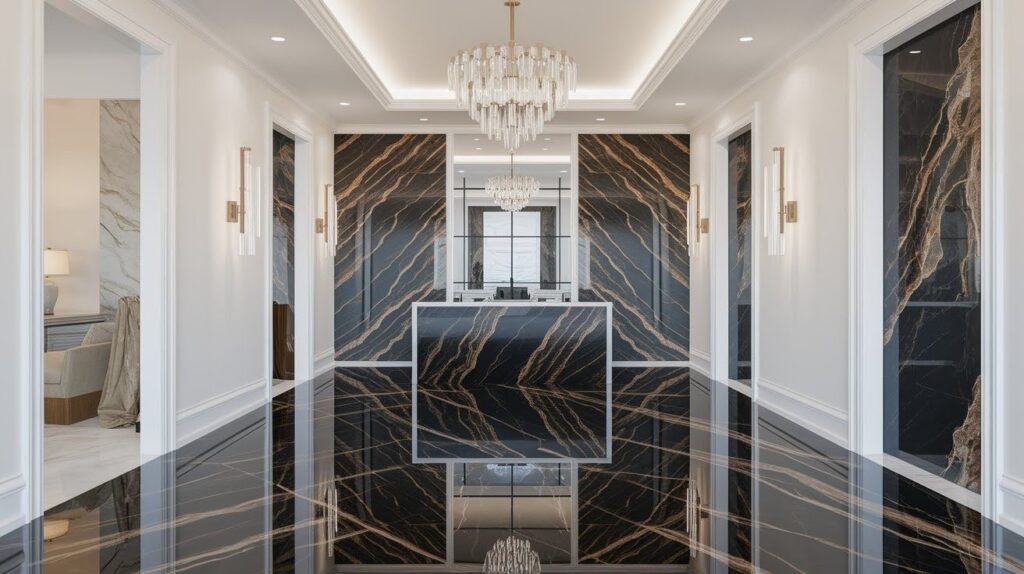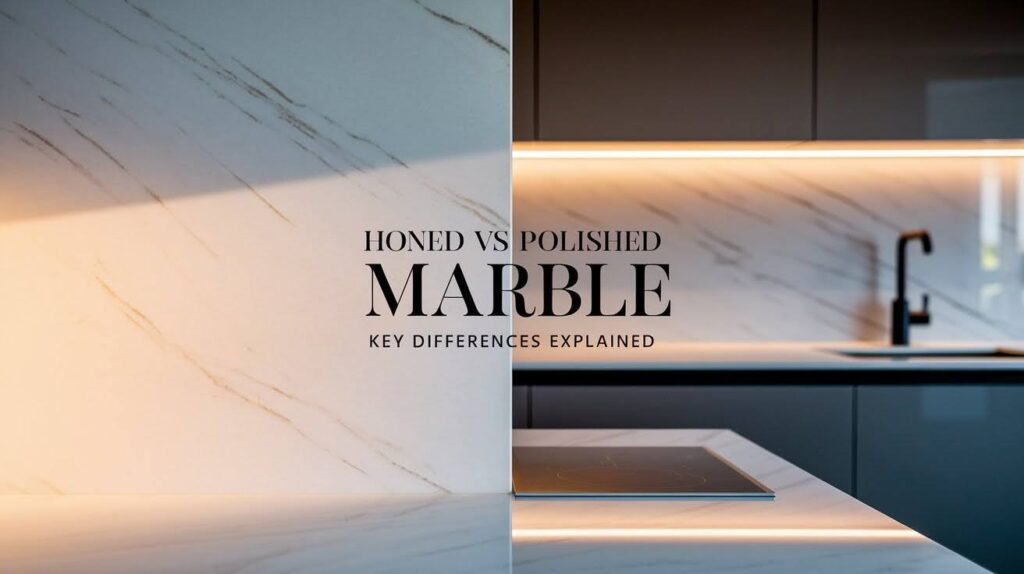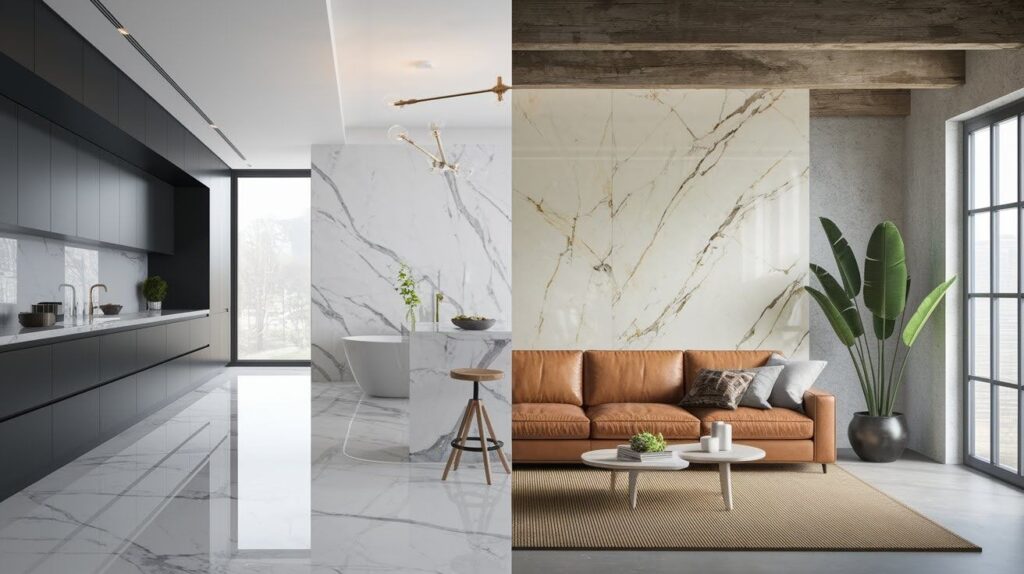Marble brings timeless beauty to floors, bathrooms, and kitchens. Although both look quite different, choosing between sharpened and polished marble can feel overwhelming.
The look, feel, and durability of your marble are all thus affected. These qualities depend on the finish.
I’ll break down the key differences between these two finishes for you to choose wisely for your space.
You will learn about just how something appears, in addition to how long something lasts. You will also learn about ways to maintain it as well as its cost.
Everything from best room applications to cleaning requirements, scratch resistance, and shine levels appears within this guide.
You’ll know exactly which marble finish matches your design goals as well as your lifestyle by the end. Let us fully opt for that option within the home.
What is a Honed Marble?

Honed marble features a matte, velvety finish that resists scratches and provides slip resistance but requires more frequent sealing than polished surfaces.
Honed marble has a matte or satin finish with no shine. The surface feels smooth and velvety, giving it a soft, natural look that’s less reflective than polished stone.
Characteristics
Honed marble resists scratches better because the matte finish hides minor marks. The textured surface provides more grip, making it slip-resistant for floors and wet areas.
However, the finish is more porous, so liquids penetrate faster and can develop stains without proper sealing.
Advantages of Honed Marble
The matte surface conceals light scratches and etching from acidic substances. Honed marble offers better traction, reducing slip hazards in bathrooms and high-traffic wet areas.
The understated finish works beautifully with natural, warm, or casual design styles.
Disadvantages of Honed Marble
The porous surface absorbs liquids quickly if left unsealed, and spills can leave permanent stains within minutes.
Honed marble needs sealing every six to twelve months, requiring more maintenance than polished marble.
What is a Polished Marble?

Polished marble has a high-gloss, reflective finish that resists stains better but shows scratches easily and becomes slippery when wet.
Polished marble has a high-gloss, reflective finish that shines like glass. The surface feels smooth and cool to the touch, and the colors appear slightly darker and richer than honed marble.
Characteristics
Polished marble is less porous than honed, offering better natural resistance to stains and moisture.
However, the glossy surface shows scratches, etches from acidic substances, and wear marks more visibly under light.
Advantages of Polished Marble
The luxurious glossy finish creates an upscale, sophisticated look that adds value to any space. The shine enhances the natural color and veining patterns in the marble, making each piece look more dramatic and vibrant.
Polished marble works perfectly in formal spaces like entryways, dining rooms, and master bathrooms. The reflective quality adds brightness and makes rooms feel larger and more open.
Disadvantages of Polished Marble
The smooth, glossy surface becomes slippery when wet, creating safety concerns in bathrooms and kitchens. Extra caution is needed in areas prone to water exposure.
Every scratch and etch mark stands out on the shiny surface, making damage more noticeable. Acidic spills from lemon juice, wine, or cleaning products leave dull spots that are hard to hide.
Honed vs Polished Marble: Key Comparisons
Compare honed and polished marble finishes across appearance, durability, maintenance needs, safety, and best applications to choose the right option.
| Feature | Honed Marble | Polished Marble |
| Finish | Matte or satin with no shine | High-gloss, mirror-like reflective surface |
| Design Style | Natural, casual, rustic, contemporary | Formal, luxurious, traditional, modern glam |
| Scratch Resistance | Hides scratches well due to matte texture | Shows scratches and etches more visibly |
| Stain Resistance | More porous, absorbs stains faster | Less porous, better natural stain resistance |
| Sealing Frequency | Every 6-12 months | Every 12-24 months |
| Slip Resistance | Better traction, safer when wet | Slippery when wet, safety concerns |
| Best for Floors | Bathrooms, high-traffic wet areas | Formal entryways, dry living spaces |
| Best for Countertops | Kitchens with casual style, bathrooms | Formal kitchens, powder rooms, statement pieces |
| Best for Vanities | Master bathrooms, family bathrooms | Formal powder rooms, guest bathrooms |
| Best for Backsplashes | Both work well (less wear and tear) | Both work well (easier to clean splashes) |
| Maintenance Level | Higher (frequent sealing, stain vigilance) | Moderate (less frequent sealing needed) |
| Color Appearance | Lighter, softer tones | Darker, richer, more vibrant tones |
| Mixing Finishes | Use on floors with polished counters | Use on counters with honed floors |


